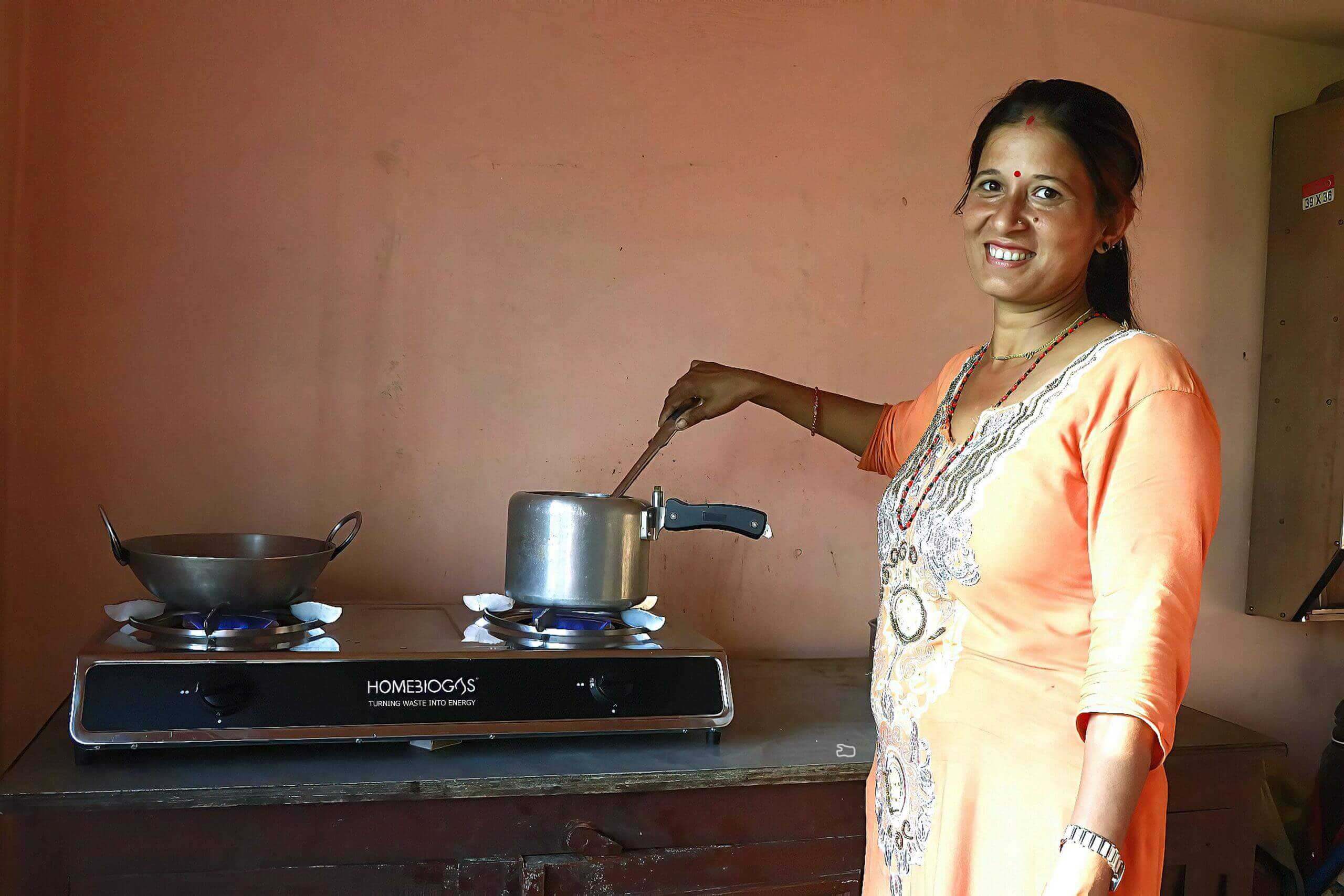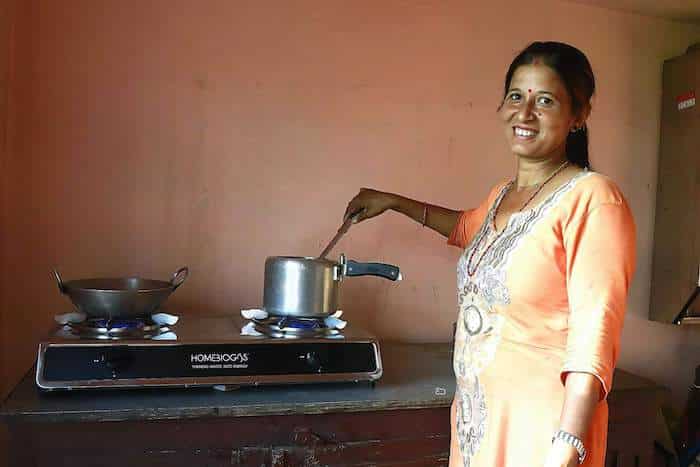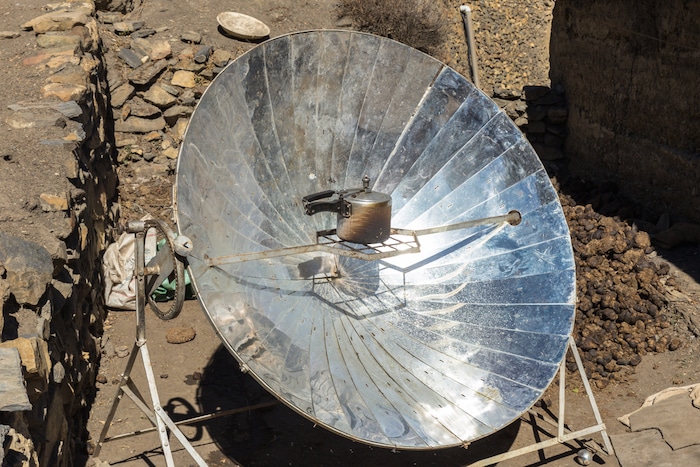
What is clean cooking?
The term “clean cooking” refers to the eco-friendly ways to prepare meals, moving away from traditional methods that rely on wood, charcoal, or natural gas.
Simply put, clean cooking solutions aim to:
- Cut down on the harmful smoke, carbon dioxide, and other pollutants in your kitchen.
- Help you get the most out of your fuel, meaning less waste and more heat for your cooking.
- Rely on renewable and less damaging resources, from the sun’s energy to plant-derived fuel.
- Minimize risks of burns and fire incidents.
Making the shift has potential health benefits and also helps conserve the environment. As a bonus, clean cooking can make daily cooking tasks more convenient, especially in areas where traditional cooking methods are widespread.
Why is clean cooking important?
At an individual level, switching to clean cooking reduces exposure to harmful pollutants, improves home air quality, and enhances family health. This personal benefit could have monumental global implications when multiplied by approximately 2.8 billion people still using polluting fuels.

The reliance on traditional cooking methods comes with an enormous annual cost of over $2.4 trillion due to negative impacts on health, climate change, and productivity. Clean cooking access on a large scale has the potential to alleviate a significant portion of this financial burden.
Furthermore, embracing clean cooking brings profound social and economic benefits, particularly for women and children in rural areas and less developed regions. Traditional methods are burdensome and time-intensive, limiting vital opportunities for learning and earning. Access to clean cooking equipment saves precious time, paving the way for better educational achievements and empowering communities.
The Environmental Impact of Clean Cooking
Clean cooking champions using green and renewable energy sources such as solar power, biogas, and ethanol, drastically reducing the environmental impact. Without the heavy reliance on biomass, the threats of forest degradation, biodiversity loss, and climbing carbon emissions are also greatly diminished.
Our food systems are a significant source of global emissions, contributing roughly 25% to 30% worldwide. Depending on the food item, a notable portion of these emissions (6-61%) can be attributed to the cooking process alone.
Moreover, inefficient cooking methods often produce black carbon, a component of soot with a high global warming potential. Transitioning to clean cooking technologies minimizes this effect, mitigating climate warming.
For instance, solar cookers emit no greenhouse gases. At the same time, improved cookstoves and biogas systems reduce emissions by burning fuel more efficiently or using waste materials that would otherwise release methane during decomposition. This efficiency reduces the strain on natural resources—efficient cookstoves can halve the amount of wood or biomass needed, preserving forests and reducing the time and resources spent on fuel collection.
Clean Cooking Solutions
Solar Cookers
Solar energy is free and plentiful in many regions, meaning you won’t face any ongoing fuel expenses once you’ve invested in equipment. It’s also incredibly safe to use; without any flames or harmful emissions, it’s perfect for indoor use and reduces health hazards.

However, there are a few drawbacks. Its efficiency suffers on overcast days or in places that don’t get much sunlight. Plus, you might find that your cooking times get longer than you’re used to, mainly when the sunlight is inconsistent. It’s worth noting that it’s not the best option for cooking early in the morning, evening, or night.
Biogas Systems
Biogas digesters are highly efficient at converting organic waste into valuable cooking gas. They’re great because they provide a consistent gas supply for your needs, no matter the weather. Additionally, they reduce methane emissions from decomposing waste, which counters environmental degradation.
However, some considerations might give you pause. The upfront cost of installing a biogas system can be high. Space could also be a concern in urban settings or smaller homes, as the system needs room for the digester. Plus, it demands regular upkeep and a steady stream of organic waste to keep running smoothly.
Super-efficient Cookstoves
These stoves use far less fuel than traditional models, which means more money in your pocket and less strain on natural resources. They’re versatile, too, working with different kinds of biomass fuels and giving you plenty of flexibility. And the best part? They release fewer pollutants.

But it’s not all smooth sailing. Super-efficient cookstoves need biomass to work, which is only a viable option in some places. And then there’s the price tag. While some budget-friendly models are out there, others might require you to reach deep into your pockets.
Electric Induction Stoves
These stoves are incredibly good at controlling cooking temperatures — no more waiting for the stove to heat up or cool down. Plus, with no open fires, they’re safer to use than traditional stoves and keep your indoor air nice and clean.
However, their green credentials hinge on whether your electricity comes from renewable sources. If not, then the environmental upsides aren’t as significant. Historically, electric induction stoves have been pricier than old-school stoves, but the good news is that costs are on the way down. Just bear in mind that they need a steady supply of electricity, which could be tricky in places where power cuts are more the rule than the exception.
LPG Stoves
These modern stoves use liquefied petroleum gas stored under pressure in gas cylinders.
While offering quick heating, high-temperature control, and more efficient and cleaner burning than traditional biomass stoves, they still rely on non-renewable fossil fuels. While they’re a step up in convenience and reducing indoor air pollution, they don’t offer the same environmental benefits as other clean cooking technologies.
Common clean cooking techniques
To reduce fuel use and cooking times:
- Keep the lid on the pots during cooking.
- Soak beans and grains before cooking.
To conserve energy:
- After you bring the food to a boil, insulate the cooking pot to retain heat.
- Use solar cookers to cook food or boil water when possible.
To reduce greenhouse gas emissions:
- Invest in biomass, electric, or induction stoves.
- Convert organic waste into methane for cooking with a biogas system.
- Use clean cooking fuel that produces fewer emissions compared to fossil fuels.
To minimize exposure to pollutants:
- Ensure good airflow in your kitchen and other cooking areas.
- Place cooking areas away from living or sleeping spaces.
How can I start clean cooking at home?
Step 1: Plan Thoroughly
Start by choosing the right technology and clean cooking fuels for your transition. If you’re leaning towards a biogas system or an efficient cookstove, consider how much space you have and how you’ll set everything up. If you’re considering solar cookers, assess how much sunlight your area gets.
Remember, beginning with even just one device can significantly impact your transition. Establish a budget and explore any local incentives or programs that could assist with the financial aspect, making your switch smoother and more affordable.
Step 2: Equip Yourself
Start by researching online reviews and consumer reports to measure the performance and reliability of different appliances. Consider factors like energy efficiency, fuel type, durability, and ease of use. It’s also important to compare costs, not just the upfront price but also long-term maintenance and operating expenses. For solar cookers and efficient stoves, check out a variety of online platforms and local stores to get a sense of what’s available. Pay attention to product warranties and customer service support, which can indicate product quality and manufacturer trustworthiness.

HomeBiogas 4
Designed for the next generation of green innovation.
For more complex solutions, like biogas systems, the selection process might involve consulting with professionals who specialize in these installations. They can offer valuable insights into the best system for your specific situation, considering factors such as your available space, the amount of organic waste you typically produce, and local climate conditions. These experts can also help you navigate any technical requirements or regulations related to the installation.
Step 3: Transition to Clean Cooking
Many clean cooking technologies differ from what you’re used to, so patience will go a long way. Start experimenting with various recipes that suit your equipment’s unique characteristics. Whether you adjust cooking times or explore new dishes best suited for solar cooking, efficient stovetops, or biogas systems, a world of culinary exploration awaits you.
Use the internet to access other people’s knowledge. Look for forums, blogs, and social media groups for clean cooking enthusiasts. These platforms are ideal for exchanging ideas, discovering new recipes specifically designed for clean cooking equipment, and picking up tips and tricks from others who have been in your shoes.
Meet HomeBiogas Solutions
HomeBiogas solutions support clean cooking with an eco-friendly and sustainable alternative to traditional methods. These systems use the natural process of anaerobic digestion to break down organic matter (food scraps, animal waste, and plant material) and produce methane-rich biogas for cooking.

The amount of biogas produced daily can vary with the type and amount of organic waste input, the system’s size, and environmental conditions. As a general guideline, the small-scale HomeBiogas system can produce enough gas for several hours of cooking from just a few kilograms of organic waste — about 1 kg of food waste can produce approximately 200 liters of biogas, which can provide about an hour of cooking time.
Installation and maintenance of HomeBiogas systems are designed with user-friendliness in mind. They’re compact units that can be set up in small outdoor spaces, making them suitable for various living environments, from small farms to off-grid properties to urban backyards. Better yet, their low-maintenance design ensures that, once installed, they require minimal intervention. This makes them an attractive option for those looking to adopt sustainable practices without the hassle of complicated upkeep.
It’s a cost-effective way to repurpose organic waste into valuable resources. When you install a biogas digester, you reduce the waste sent to landfills. This approach lowers methane emissions from decomposing waste, further mitigating its impact on climate change. Moreover, the liquid fertilizer produced alongside the biogas for cooking is a bonus. This highly nutritious mix will enrich soil health for gardens and plants, so you never have to use chemical fertilizers again.
Summary
The transition to clean cooking is a matter of convenience and environmental responsibility. It’s a vital step towards ensuring the health and well-being of billions of people and the planet itself. It’s an easy way to improve your lifestyle and reduce your carbon footprint.
However, adopting clean cooking practices requires collective action from governments, communities, and individuals to create a snowball effect at scale.
Solutions like HomeBiogas offer a sustainable and innovative approach to making this change happen. They’re cost-effective and easy to install anywhere, making it easy to address many of the challenges of traditional cookstoves. This reduces reliance on conventional biomass fuels, reducing deforestation, air pollution, and greenhouse gas emissions.






